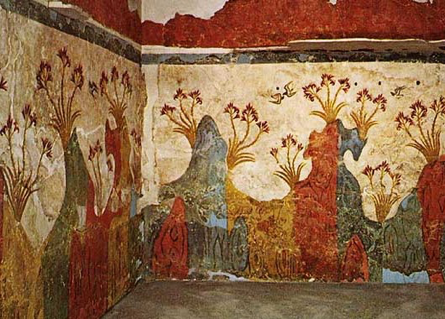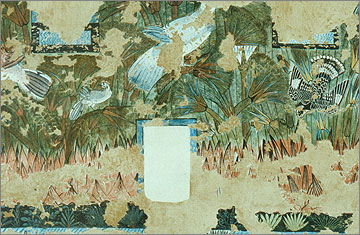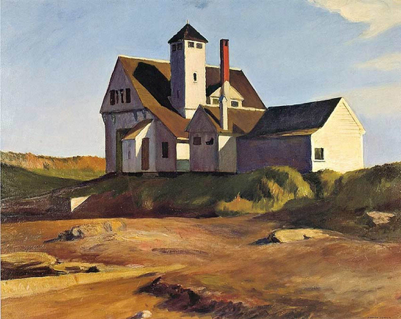10: Landscape
- Page ID
- 63707
\( \newcommand{\vecs}[1]{\overset { \scriptstyle \rightharpoonup} {\mathbf{#1}} } \)
\( \newcommand{\vecd}[1]{\overset{-\!-\!\rightharpoonup}{\vphantom{a}\smash {#1}}} \)
\( \newcommand{\dsum}{\displaystyle\sum\limits} \)
\( \newcommand{\dint}{\displaystyle\int\limits} \)
\( \newcommand{\dlim}{\displaystyle\lim\limits} \)
\( \newcommand{\id}{\mathrm{id}}\) \( \newcommand{\Span}{\mathrm{span}}\)
( \newcommand{\kernel}{\mathrm{null}\,}\) \( \newcommand{\range}{\mathrm{range}\,}\)
\( \newcommand{\RealPart}{\mathrm{Re}}\) \( \newcommand{\ImaginaryPart}{\mathrm{Im}}\)
\( \newcommand{\Argument}{\mathrm{Arg}}\) \( \newcommand{\norm}[1]{\| #1 \|}\)
\( \newcommand{\inner}[2]{\langle #1, #2 \rangle}\)
\( \newcommand{\Span}{\mathrm{span}}\)
\( \newcommand{\id}{\mathrm{id}}\)
\( \newcommand{\Span}{\mathrm{span}}\)
\( \newcommand{\kernel}{\mathrm{null}\,}\)
\( \newcommand{\range}{\mathrm{range}\,}\)
\( \newcommand{\RealPart}{\mathrm{Re}}\)
\( \newcommand{\ImaginaryPart}{\mathrm{Im}}\)
\( \newcommand{\Argument}{\mathrm{Arg}}\)
\( \newcommand{\norm}[1]{\| #1 \|}\)
\( \newcommand{\inner}[2]{\langle #1, #2 \rangle}\)
\( \newcommand{\Span}{\mathrm{span}}\) \( \newcommand{\AA}{\unicode[.8,0]{x212B}}\)
\( \newcommand{\vectorA}[1]{\vec{#1}} % arrow\)
\( \newcommand{\vectorAt}[1]{\vec{\text{#1}}} % arrow\)
\( \newcommand{\vectorB}[1]{\overset { \scriptstyle \rightharpoonup} {\mathbf{#1}} } \)
\( \newcommand{\vectorC}[1]{\textbf{#1}} \)
\( \newcommand{\vectorD}[1]{\overrightarrow{#1}} \)
\( \newcommand{\vectorDt}[1]{\overrightarrow{\text{#1}}} \)
\( \newcommand{\vectE}[1]{\overset{-\!-\!\rightharpoonup}{\vphantom{a}\smash{\mathbf {#1}}}} \)
\( \newcommand{\vecs}[1]{\overset { \scriptstyle \rightharpoonup} {\mathbf{#1}} } \)
\( \newcommand{\vecd}[1]{\overset{-\!-\!\rightharpoonup}{\vphantom{a}\smash {#1}}} \)
\(\newcommand{\avec}{\mathbf a}\) \(\newcommand{\bvec}{\mathbf b}\) \(\newcommand{\cvec}{\mathbf c}\) \(\newcommand{\dvec}{\mathbf d}\) \(\newcommand{\dtil}{\widetilde{\mathbf d}}\) \(\newcommand{\evec}{\mathbf e}\) \(\newcommand{\fvec}{\mathbf f}\) \(\newcommand{\nvec}{\mathbf n}\) \(\newcommand{\pvec}{\mathbf p}\) \(\newcommand{\qvec}{\mathbf q}\) \(\newcommand{\svec}{\mathbf s}\) \(\newcommand{\tvec}{\mathbf t}\) \(\newcommand{\uvec}{\mathbf u}\) \(\newcommand{\vvec}{\mathbf v}\) \(\newcommand{\wvec}{\mathbf w}\) \(\newcommand{\xvec}{\mathbf x}\) \(\newcommand{\yvec}{\mathbf y}\) \(\newcommand{\zvec}{\mathbf z}\) \(\newcommand{\rvec}{\mathbf r}\) \(\newcommand{\mvec}{\mathbf m}\) \(\newcommand{\zerovec}{\mathbf 0}\) \(\newcommand{\onevec}{\mathbf 1}\) \(\newcommand{\real}{\mathbb R}\) \(\newcommand{\twovec}[2]{\left[\begin{array}{r}#1 \\ #2 \end{array}\right]}\) \(\newcommand{\ctwovec}[2]{\left[\begin{array}{c}#1 \\ #2 \end{array}\right]}\) \(\newcommand{\threevec}[3]{\left[\begin{array}{r}#1 \\ #2 \\ #3 \end{array}\right]}\) \(\newcommand{\cthreevec}[3]{\left[\begin{array}{c}#1 \\ #2 \\ #3 \end{array}\right]}\) \(\newcommand{\fourvec}[4]{\left[\begin{array}{r}#1 \\ #2 \\ #3 \\ #4 \end{array}\right]}\) \(\newcommand{\cfourvec}[4]{\left[\begin{array}{c}#1 \\ #2 \\ #3 \\ #4 \end{array}\right]}\) \(\newcommand{\fivevec}[5]{\left[\begin{array}{r}#1 \\ #2 \\ #3 \\ #4 \\ #5 \\ \end{array}\right]}\) \(\newcommand{\cfivevec}[5]{\left[\begin{array}{c}#1 \\ #2 \\ #3 \\ #4 \\ #5 \\ \end{array}\right]}\) \(\newcommand{\mattwo}[4]{\left[\begin{array}{rr}#1 \amp #2 \\ #3 \amp #4 \\ \end{array}\right]}\) \(\newcommand{\laspan}[1]{\text{Span}\{#1\}}\) \(\newcommand{\bcal}{\cal B}\) \(\newcommand{\ccal}{\cal C}\) \(\newcommand{\scal}{\cal S}\) \(\newcommand{\wcal}{\cal W}\) \(\newcommand{\ecal}{\cal E}\) \(\newcommand{\coords}[2]{\left\{#1\right\}_{#2}}\) \(\newcommand{\gray}[1]{\color{gray}{#1}}\) \(\newcommand{\lgray}[1]{\color{lightgray}{#1}}\) \(\newcommand{\rank}{\operatorname{rank}}\) \(\newcommand{\row}{\text{Row}}\) \(\newcommand{\col}{\text{Col}}\) \(\renewcommand{\row}{\text{Row}}\) \(\newcommand{\nul}{\text{Nul}}\) \(\newcommand{\var}{\text{Var}}\) \(\newcommand{\corr}{\text{corr}}\) \(\newcommand{\len}[1]{\left|#1\right|}\) \(\newcommand{\bbar}{\overline{\bvec}}\) \(\newcommand{\bhat}{\widehat{\bvec}}\) \(\newcommand{\bperp}{\bvec^\perp}\) \(\newcommand{\xhat}{\widehat{\xvec}}\) \(\newcommand{\vhat}{\widehat{\vvec}}\) \(\newcommand{\uhat}{\widehat{\uvec}}\) \(\newcommand{\what}{\widehat{\wvec}}\) \(\newcommand{\Sighat}{\widehat{\Sigma}}\) \(\newcommand{\lt}{<}\) \(\newcommand{\gt}{>}\) \(\newcommand{\amp}{&}\) \(\definecolor{fillinmathshade}{gray}{0.9}\)Landscape Drawing
Drawing or painting our surroundings is something artists have done for thousands of years. Most of the ancient images of landscapes are lost forever along with the plaster walls or other supports used in their creation. Some early paintings survive decorating the walls of palaces and rooms found in areas of volcanic activity in the ancient cities of Thera and Pompeii. These dwellings were buried in volcanic ash preserving the beautiful frescoes of flora and fauna. Additionally, during the Amarna Period in Egypt there was a flourishing of artistic activity unlike any the Ancient Egyptians previously experienced. Some of the artwork depicted natural scenes similar to landscapes with vitality and life.
LANDSCAPE FROM 3,500 YEARS AGO!


Island of Thera, Minoan 2000 - 1400 BCE
https://kuscholarworks.ku.edu/bitstream/handle/1808/10273/King_ku_0099M_12275_DATA_1.pdf;sequence=1
https://www.cs.princeton.edu/courses/archive/spring07/cos598C/notes/4_feb_2007_presentation.pdf

Amarna Landscape 1353-1336 BCE
https://www.amarnaproject.com/pages/amarna_the_place/north_palace/index.shtml
https://www.britannica.com/art/Amarna-style
DETAIL OF FLEMISH LANDSCAPE FROM 1500s

NORTHERN RENAISSANCE LANDSCAPE
• Take a look at this early Flemish 1500s painting of a landscape
• What areas can you identify that help create the illusion of depth?
• Some of these are known as Principles of Design, others are Art Elements
• There are also three distinct areas of the landscape explained below

IDENTIFIABLE LANDSCAPE PARTS
• Take a look at this 1800s painting of a landscape
• What areas can you identify that help create the illusion of depth?
• There are also three distinct areas of the landscape – can you name these three areas?
• Answer below

Answer: FOREGROUND, MIDDLE GROUND, AND BACKGROUND
• Foreground is in yellow
• Middle ground is in blue
• Background is in violet

OTHER FACTORS
• Notice that the landscape features a full range of values
• The shapes with the highest contrast are closest to the viewer in the foreground
• The Principle of Verticality is the landscape forms closest to us are located at the bottom of the visual field (area of the paper if a drawing, canvas if a painting)
• The middle ground has less contrast and detail
• The background has the least amount of contrast giving the illusion that the shapes “fade into the distance”
• In a painting, the intensity of color may be brighter in the foreground and become less intense (more dull/diluted) in the middle and backgrounds

“RULE OF THIRDS”
• Rule of Thirds is dividing the visual field into thirds
• Divisions into thirds can be horizontal, vertical, or both
• It does not have to be exact, since it is an aesthetic design principle
• Rule of Thirds applies nicely to landscape photography, painting, and drawing
• The concept of the Rule of Thirds is a Principle of Design
EXAMPLES OF 2-D ART USING RULE OF THIRDS LANDSCAPE FORMAT


EXAMPLE OF RULE OF THIRDS PORTRAIT FORMAT


VERTICAL RULE OF THIRDS MAY RELATE TO FOREGROUND, MIDDLE GROUND, AND BACKGROUND
• The foreground is made up of the large rocks
• The middle ground features the closest trees
• The background includes the lightest in value trees - fading them into the background

CONTEMPORARY DRAWING


1500s DUTCH/FLEMISH PAINTING

NOT ALWAYS RULE OF THIRDS
• This painting creates balance through asymmetrical placement of the sailboats
• Other important factors include the use of light and shadow, repetition of forms (boat sails), shape of the clouds, and the placement of the horizon line

LATE 1700S/EARLY 1800s BRITISH PAINTING

EARLY 1800s BRITISH PAINTING


EARLY-MID 1800s FRENCH PAINTING



MID-LATE 1800s FRENCH PAINTING




MID-LATE 1800s AMERICAN PAINTING


MID-1900s AMERICAN



LANDSCAPE DRAWINGS INCLUDING BUILDINGS


CITYSCAPES
If you include a building in your landscape, looking at these next several cityscape slides may help you



Student Work

Landscape Drawing Assignment
Where to Begin?
• Choose a place outside to draw where you can view a natural setting
• If you successfully include a building that’s extra credit
• Determine your eye level
• Can you include a foreground, middle ground, and background?
• Create a balanced composition by cropping
• Possibly use “Rule of Thirds” to create balance
• Use softer pencils from HB up to 6B and a full sheet of paper
• Hold the pencil loosely and relax
• Focus on values


